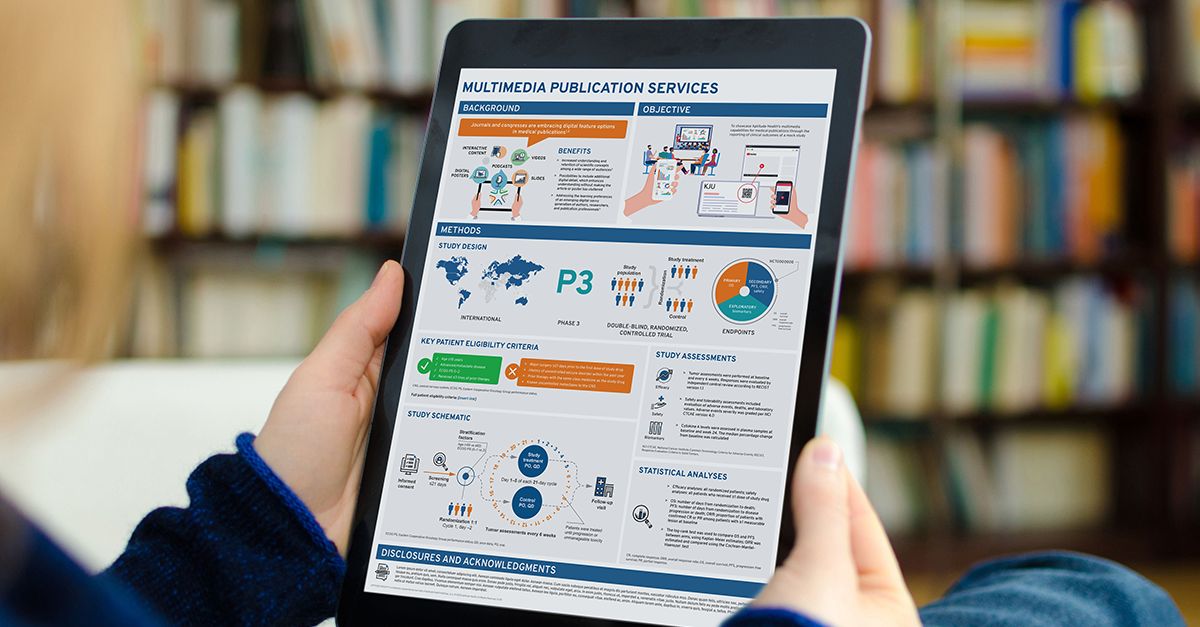Digital features in medical publications are here to stay. These features offer unique benefits that make reading and sharing easier, and less time-consuming. If your organization has been slow to integrate digital features in medical publications, you may be missing out. Read on to learn more about the benefits of digitally enhanced medical publications.
Digital Tools Help Replicate In-Person Interactions
In the wake of COVID-19, digital features are more vital than ever. The pandemic has disrupted many medical events and forced healthcare providers (HCPs) online. This trend is likely to continue, even as restrictions ease and medical conferences resume.
Exactly 70% of companies claim that they have launched or plan to launch a digital transformation strategy. Online content curation and social sharing are here to stay. An increasing number of HCPs plan to use online tools to keep up-to-date with medical advances.
“Digital features represent a new era for medical publications and journals,” said Sandra Mendes, PhD, CMPP – Vice President of Medical Publications at Aptitude Health. “These features enhance traditional content with exciting, dynamic, interactive material.”
Digital Features Allow HCPs to Review and Digest Critical Data Quickly
HCPs are busier than ever, and the global pandemic has decreased the time they can dedicate to review literature. However, for optimal patient care, it is of utmost importance that these professionals are up-to-date with the latest medical developments in their field. Digitally enhanced publications help meet HCPs’ demand to rapidly browse through easily digestible content and select the most relevant information for in-depth analysis.
Many 21st-century HCPs have also used digital content during most, if not all, of their careers. Nowadays, most HCPs are digitally savvy, and expect digital features to be an integral part of their education.
Consider a recent global study, which revealed that 70% of consumers expect companies to understand their needs and expectations. “Consumers” of medical publications are likely to have the same expectations. Publications with digital enhancements continue to provide all the traditional content and information, while also addressing the learning preferences of HCPs, as well as facilitating education within a busy schedule. Digitally enhanced publications also promote readers’ engagement.
Digital Features Extend the Reach of Complex Research
Infographics and other visual communications can explain core concepts without overwhelming readers. These digital features reach out to audiovisual learners and readers without a strong medical background, as is the case for many patients. Digital enhancements can improve accessibility and attract new audiences.
Further, digital features can be used to provide additional background information. Research teams can pair infographics with a link to a plain-language summary. This summary can lead to the original study, accompanied by a video abstract. This breadcrumb trail helps readers stay engaged.
Digital Features Capture Attention and Encourage Social Sharing
About 65% of HCPs use social media for professional purposes. Digital enhancements promote dissemination both peer-to-peer and across a wide range of audiences. These enhancements also encourage social sharing and interaction between HCPs in geographically distant locations.
Digital features direct web traffic to the desired target. Readers can share video abstracts, podcasts, and virtual posters with a click of a button. Eye-catching graphics drive interest.

